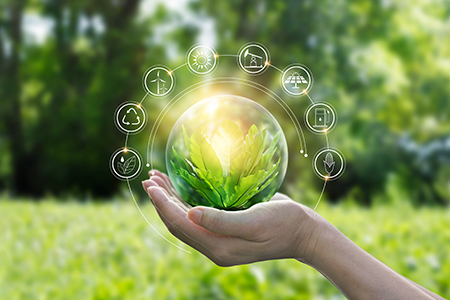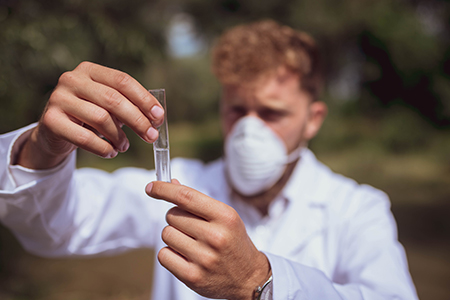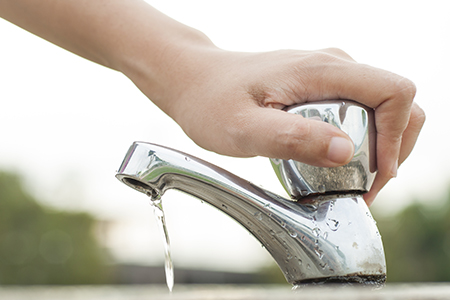 Bottled water is a multibillion-dollar industry that involves purifying natural water and later packaging it for sale. The demand grows drastically every day, leading to companies producing the commodity. Before looking at various aspects of bottled water, for instance, its sustainability, production, and public access, it is vital to understand the origin of bottled water and the concept behind its emergence. The first plant to produce bottled water was Holy Well, a company in the United Kingdom, whereas the first bottled water was Malvern Water. The water was sourced from wells that were in the same location as the company. Officially, bottling at the site began operating in 1921, and that was long before anyone else thought of packaging the readily available beverage and selling it commercially to people.
Bottled water is a multibillion-dollar industry that involves purifying natural water and later packaging it for sale. The demand grows drastically every day, leading to companies producing the commodity. Before looking at various aspects of bottled water, for instance, its sustainability, production, and public access, it is vital to understand the origin of bottled water and the concept behind its emergence. The first plant to produce bottled water was Holy Well, a company in the United Kingdom, whereas the first bottled water was Malvern Water. The water was sourced from wells that were in the same location as the company. Officially, bottling at the site began operating in 1921, and that was long before anyone else thought of packaging the readily available beverage and selling it commercially to people.
After a few years later, Jackson’s Spa began producing bottled water and selling it commercially. The Boston-based company aimed at sharing the health benefit of water innovatively. That led to in-depth water research and discoveries which brought about carbonated water, an imitation that made bottled water to display the fizzy aspect. Carbonated water revolutionized the market, and in 1908, inventor John Hawkins patented his discovery. The production of carbonated water is considered a landmark of bottled water because the invention ended up reducing the cost of water production, and that catapulted the bottled water industry to greater heights.
The Aftermath of the Invention of Carbonated Water
While John Hawkins enjoyed his patented invention, the bottled water industry boomed with new imitations cropping up every day. The demand for bottled water was further fueled by cholera and typhoid outbreaks in the United States, which marked the sale of more than 7million bottles by a New York Company called Saratoga Springs. After all, people saw bottled water as the best way to remain healthy throughout the outbreak. However, later on, the popularity of bottled water declined after the introduction of chlorination, a renowned method of water purification.
Chlorination means adding chlorine compounds to natural water to kill viruses and bacteria known to spread waterborne diseases. The method of water purification saw individuals cure tap water for consumption, and that is how its invention ended up reducing the demand for bottled water. However, years later, a series of effective marketing strategies were implemented which increased the need for bottled water bringing the commodity to its former glory.
Major Types of Bottled Water
There are various types of bottled water depending on their source, chemical composition, and taste. Over the years, companies have been using different types of water to market their beverage, following that some types of water are considered healthier than others due to their mineral composition. Broadly, water is categorized into:
Purified Water
Purified water is the type of bottled water that has been treated using different purification processes such as distillation, reverse osmosis, and deionization. One of the earliest purifying water methods was distillation, which explains why purified water was also known as distilled water for years. After all, both processes aim at removing impurities and other contaminants that make natural water unsafe for consumption. Other processes known to purify water apart from the ones mentioned above include:
- Carbon filtering.
- Ultrafiltration.
- Ultraviolet oxidation.
- microfiltration
Spring Water
As the name suggests, this type of water naturally flaws on the earth’s surface. According to the FDA, before any bottled water is considered spring water, it must be collected directly from a spring or by tapping it from a natural formation that feeds water to the spring. Also, spring water does not undergo complex chemically or mechanically engineered processes to remove impurities, and that is why it is considered less pure than purified water. That is because it must retain the chemical composition of the water flowing naturally on the earth’s surface.
Sparkling Bottled Water
Any water whose composition has been slightly altered by adding carbon dioxide under high pressure is considered sparkling water. This process of creating the beverage makes the water fizzy or bubbly. So long as safety measures are applied when creating sparkling water, the beverage can get used for hydration. Note that even though carbon dioxide is added under high pressure, sparkling bottled water tends to contain the same amount of carbon dioxide it had when coming from the source.
Well Water
When machines are used to drill the permeable rock or aquifer, the resultant liquid is Well water. After drilling, a pumping system and pipes are used to siphon and guide the water to the packaging area. There it is treated and packed into bottles. However, before well water is sold commercially, it must be regulated by bodies such as the FDA or EPA.
Artesian water
Artesian water is similar to well water, only that this time the water level is slightly above the permeable rock which provides Well Water. In that case, Artesian bottled water undergoes the same processes as Well Water before it is bottled and commercially sold.
Production of Bottled Water

The production of bottled water continues to grow, with companies using sophisticated methods to provide cleaner and healthier water to the general public. Minus state-of-the-art machinery and improved chemical processes, every bottled water company uses specific steps to produce the beverage. So far, below is the overview of the bottled water manufacturing process.
Selection of the Source
As stated earlier, every bottled water comes from somewhere. However, most people don’t know that the origin is mandatory since it determines the bottled water getting produced. Therefore, the first step is to determine the source of water. Where a company gets its water will influence the taste and chemical composition of the beverage regardless of the process used to clean the water. Therefore, water can come from a Spring, Well, or an Artesian Well. Also, the company may decide to purify the water using different purification processes. Once the water source is figured, it becomes easy to determine the next step the water has to go through. Note that the FDA and EPA require companies to state the source of their water. That is why you will find water bottles with different labels such as distilled water, sparkling water, or spring water.
Water Purification

For the water to pass FDA or EPA guidelines, it must undergo purification. This step is vital in removing any unnecessary impurities while maintaining the properties of water to suit its source. Different companies apply different filtration methods depending on the production scale and machinery available. Also, water filtration removes any unnecessary microorganisms to improve water quality and increase its shelf life. That is why bottled water is hardly contaminated during storage. So far, the main steps used to filter water include:
- Coagulation.
- Sedimentation.
- Filtration.
- Disinfection.
Tank Disinfection
Once water is purified or filtered, it must be stored in a clean, vented, and disinfected tank. The idea is to retain the quality of filtered water until it is bottled. Note that the solutions used to prepare and sanitize the tank should be unscented. The same applies to any bleach applied during tank cleaning and venting. If this stage is not handled carefully, the resultant water will be unsafe for use, and also it will not pass the FDA clearance. Like the purification process, tank venting helps prolong the waters’ shelf life and ensures there are no microorganisms that may reduce water quality.
Adding Carbon Dioxide (Optional)
Adding or replenishing carbon dioxide in the already filtered water is an optional stage applied mainly by companies producing spring water. The purpose of the process is to make sure the filtered water retains the same amount of carbon dioxide it had while at the source. That is why bottled spring water tends to have a similar taste to water from the spring despite undergoing different mineral altering processes. Moreover, replenishing carbon dioxide adds the bubbly and fizzy effect that you see on bottled spring water. Therefore, the carbonation process should be carried out keenly to ensure the water doesn’t end up with unwanted particles and microorganisms that might tamper with the taste and longevity.
Bottle Sourcing and Bottle Preparation
The sourcing of bottles is a step that should not be left out from any bottled water-producing procedure. That is because the kind of bottle a company sources or designs play a significant role in the pricing of bottled water. While some companies use ordinary plastic bottles, others use expensive glass bottles of different sizes and shapes. Furthermore, if the company is using plastic bottles, they must be 100% recyclable. That is why EPA recommends bottling companies to use polyethylene terephthalate bottles with a resin identification code of 1. The RIC or resin identification code is usually located at the bottom of the container.
On the other hand, bottle preparation involves cleaning, disinfecting, and branding. Cleaning and disinfecting bottles ensure that the containers are free of any microorganisms and other elements that may reduce water quality. Branding entails coming up with bottle designs and labels that will attract the consumer. While some companies pay little to no attention to bottle branding, other companies have a branding team that ensures the final water bottle is attractive and perfect for the consumer. Such bottled water tends to be expensive due to the resources used during branding. Regardless of the brand a company chooses, the label should indicate the source of water. That is a directive from the FDA.
Filling of the Bottle
Once the bottles are ready, the company fills them with clean filtered water. Moreover, the bottles must be rechecked to make sure they are clean. Filled bottles are then secured using a lid to prevent spilling of water. Some companies complete this stage before labeling bottles, especially if the labels are made of paper or any material that damages when it comes in contact with water. Filling water bottles can be done using gas filtration, which is considered effective, or any other computerized method. The final product is then packed into boxes or plastic bags and shipped for sale. Transportation should also be perfect to avoid any unnecessary damages.
Bottled Water Sustainability
Even though the future of bottled water continues to brighten, various aspects threaten the sustainability of the billion-dollar industry. One of the main challenges is the fight between tap water and bottled water. For years now, there has been a silent war between tap water vendors and bottled water suppliers, with both sides trying to outdo each other. While tap water is considered cheap, bottled water is regarded as safe, and so most people are torn between which method to consider.
Another element negatively affecting bottled water is the carbon footprint and environmental sustainability. Most people view bottled water as one of the biggest problems facing the existence of a better environment. That is because of the packaging used and the carbon emitted during the manufacturing of bottled water. Furthermore, some companies use solutions that pose a danger to plants and animals once emitted into the environment. Bottled water companies are innovating technology that is cost-effective and has a low impact on the environment to combat these challenges. Additionally, they are coming up with solutions that are effective and environmentally friendly.
Currently, there are bottled water companies that are carbon-neutral. That is because their processing plants use geothermal thermal energy to manufacture bottled water. That, in turn, reduces the amount of carbon dioxide emitted in the environment. Furthermore, the companies are using water bottles that are 100% recyclable or reusable. These are just some of the ways bottled water companies are ensuring bottled water sustainability. As technology advances, bottled water companies become sure of their future economically. As a result, the market value of bottled water companies is expected to increase at a tremendous rate by the end of 2025.
Public Access to Water and Other Issues

Even though 97% of the earth is covered with water, a significant number of people lack access to clean water. According to WHO, one out of three people worldwide does not have access to quality drinking water. With millions of people facing dehydration, non-profit organizations are coming up with ideas to provide people with secure sources of clean water. That is by establishing boreholes, public standpipe, and protected dug wells. Additionally, different organizations are coming together to increase water accessibility and improve water caption areas’ conditions, not to mention educating individuals on maintaining natural water sources.
As public access to natural water continues deteriorating, bottled water companies are taking the initiative of supplying different areas with clean and treated water at a cost. Although in non-developed regions, these companies are faced with problems such as poor roads, making it hard to reach the market. Therefore, public access to clean water requires creative thinking for anyone to come up with a sustainable solution.
Water Stewardship
The competitiveness among bottled water companies continues to grow every day. For companies to remain competitive, they are coming up with ways to reduce bottled water production while maintaining the water quality, thus decreasing the overall cost per bottle. But then, due to the ongoing water scarcity in different regions across the globe, bottled water companies are slowly cultivating the stewardship concept. The idea involves protecting natural water sources using every method possible to make sure natural water survives.
That is because every bottled water company understands conserving natural water is a long-term goal that will guarantee business continuity and improve the general quality of life. As a result, the concept is being implemented by some of the biggest bottled water and beverage companies. Stewardship is just one of the few ways bottled water companies use their resources to ensure the industry’s sustainability.
The future of bottled water companies is becoming certain after an increase in the industry’s market value over the past few years. So far, the bottled water company industry is projected to grow beyond 200billion dollars in the next five years. That is not just because of the increased demand for clean water but because Bottled water companies are coming up with technologically advanced ways to increase production of the commodity while reducing cost. So far, every step being taken by these companies is yielding positive results. In no time, bottled water production will be fast and with minimal damage to the environment.
